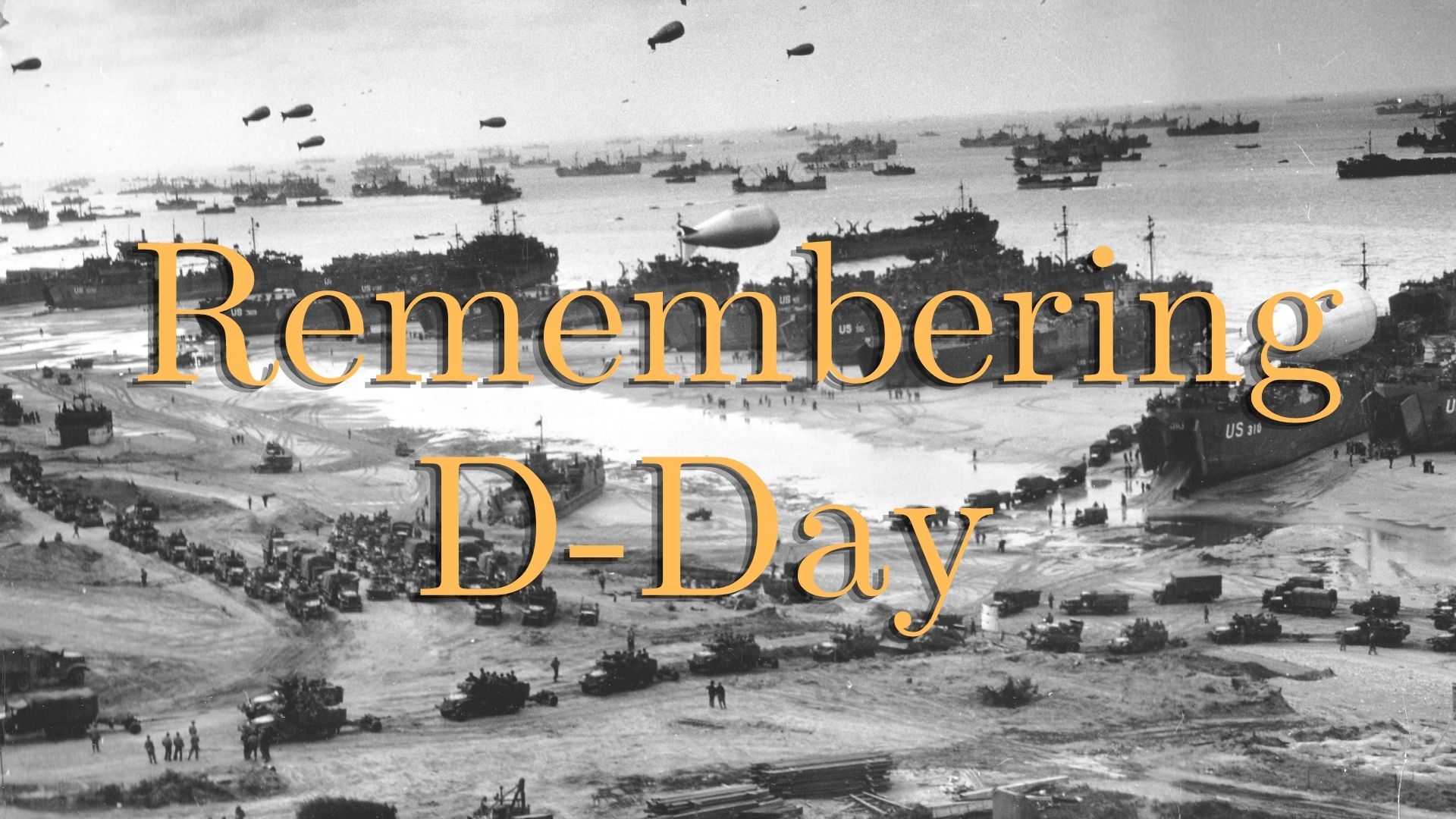June 6, 2022 is the 78th Anniversary of the Normandy Invasion, code named Operation Overlord, included both air and sea assaults. The amphibious assault was code named Operation Neptune. These operations constitute the D-Day Invasion. The Normandy landings were the largest amphibious military assault in history. By the end of the day, 5,000 vessels had landed 160,000 troops on the French coastline, launching the push to defeat Germany.
The Allies selected Normandy as the landing site for the invasion because it provided the best access to France’s interior, and it wasn’t as heavily defended as other parts of the northern French coastline. Initially planned for May 1944, the invasion was delayed until June due to a lack of landing craft. Weather conditions almost caused another delay, but Commander of the Supreme Headquarters Allied Expeditionary Force General Dwight Eisenhower made the decision to proceed as planned despite heavy cloud cover.
The German High Command understood that the Allies were coming. They just didn’t know where or when. In the months leading up to the invasion, the Allies conducted Operation Bodyguard, a substantial military deception that used electronic and visual misinformation to mislead the Germans as to the date and location of the main Allied landings.
The allies bombed Calais heavily to make the Germans think the invasion was going to be there. Dummy parachutists and radar-jamming devices were dropped into strategically key areas to make German radar screens believe there was an Allied convoy already on the move.
Shortly after midnight on June 6, 1944, the Normandy Invasion began when more than 2,200 allied bombers attacked targets along the coast and inland. The Americans were assigned to land at sectors code named Utah and Omaha, the British at Sword and Gold, and the Canadians at Juno. To meet the conditions expected on the Normandy beachhead, special technology was developed, including two artificial ports called Mulberry harbors and an array of specialized tanks nicknamed Hobart’s Funnies. Clouds hindered the air strikes, and the coastal bombing at Omaha Beach was particularly ineffective. More than 24,000 American, British, and Canadian airborne assault troops and 1,200 aircraft followed the air bombardment. At 1:30 a.m. the 101st (U.S.) Airborne Division began landing behind Utah beach to secure the exits from the beach, and the 82d (U.S.) Airborne Division began landing at 2:30 a.m. to secure bridges on the right flank of the beachhead. Thick cloud cover also hindered the air insertion, and many of the units missed their landing zones, often by miles. On the coastline, the second phase began at 5:30 a.m. when six Allied divisions and numerous small units began landing on the five beaches. The Allies landed more than 160,000 troops at Normandy, of which 73,000 were American. There were also 83,115 British and Canadian forces who landed on Gold, Juno, and Sword beaches.
By the end of the first day, none of the assault forces had secured their first-day objectives. Allied casualties on June 6 have been estimated at over 10,000 killed, wounded, and missing in action: 6,603 Americans, 2,700 British, and 946 Canadians. Over the following days the Allies gradually expanded their tenuous foothold. When a failed German counterattack on August 8 resulted in more than 50,000 German troops being encircled by Allied forces near the town of Falaise, the tide turned, and the Allies broke out of Normandy on August 15. Once out of Normandy, Allied forces advanced quickly and liberated Paris on August 25. German forces retreated across the Seine five days later, marking the end of Operation Overlord.
The cost of the Normandy campaign was high on both sides. From D-Day through August 21, the Allies landed more than two million men in northern France and suffered more than 226,386 casualties: 72,911 killed/missing and 153,475 wounded. German losses included over 240,000 casualties and 200,000 captured. Between 13,000 and 20,000 French civilians died, and many more were seriously wounded.
The Normandy invasion was a significant psychological blow that began to turn the tide against the Nazis. It also prevented Hitler from sending troops from France to build up his Eastern Front against the advancing Soviets. The following spring, on May 8, 1945, the Allies formally accepted the unconditional surrender of Nazi Germany.

